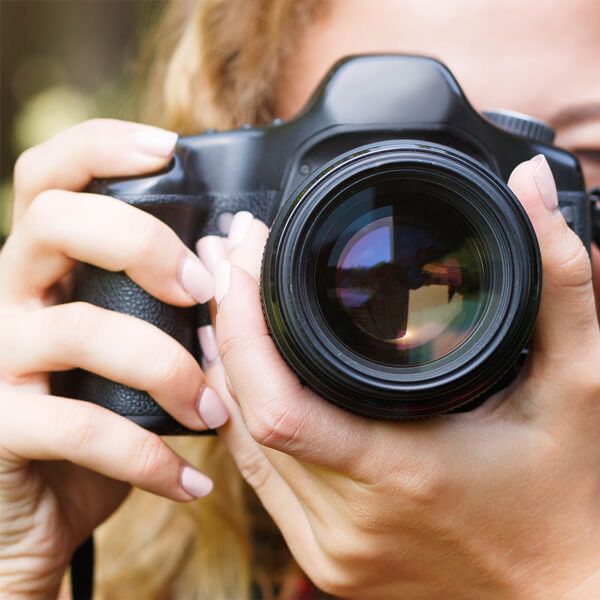Before departing for Tanzania, I was prepared to leave all thoughts of work behind for two weeks. I never expected that this African safari experience would remind me of what it takes to be lucky enough to capture great custom marketing photos.
Getting a great shot under less than optimum circumstances (e.g., “out in the wild” and not under flattering studio lights) is an excellent skill for every marketer to have in their toolkit, especially since there always seem to be last-minute instances when hiring a pro for custom photography isn’t possible—or economical.
Read on to get five foolproof tips for taking high-quality custom marketing photos and other branded stock your business needs so that you’re ready the next time you are called on to snap fresh, one-of-a-kind images.
Why is personalized photography important for marketing?
Marketing assets that feature good custom stock images are more likely to resonate with your target audience than those with poor quality stock images or text alone because exceptional marketing photography helps paint a picture.
Having first-rate images is so important for marketing that Google keeps investing in expanding its visual-based search tools. In fact, last week, its developers released a new “multi-search” functionality for Google Lens that gives users the power to search using text and images simultaneously.
Better still, when you create your own custom marketing photos, you now have images that you can use however you like that are copyright-free and which no one else is using in their traditional or digital marketing.
Plus, you don’t have to use your precious time to navigate complicated reproduction rules set by stock image providers. Who has the time to keep up with every commercial-use stock providers’ differing basic, standard, and extended usage rights?
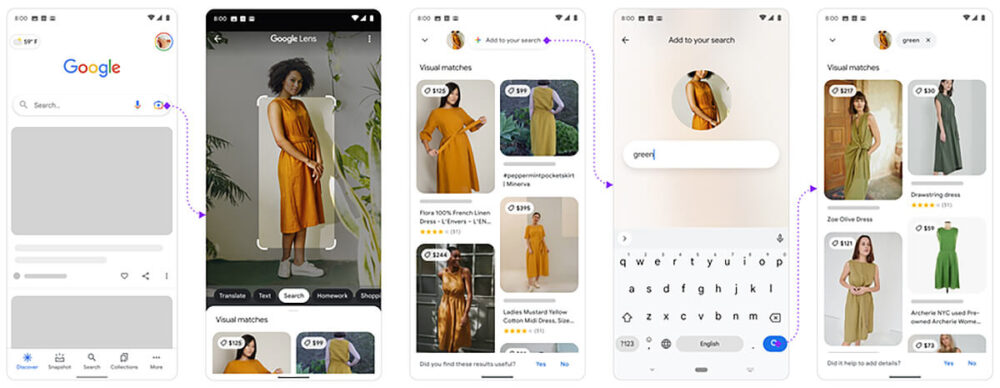
According to research from Hubspot, 68% of consumers reported that they would pay more for products and services from a brand known to offer top-notch customer service. With the number of users searching by voice and visuals on the rise, one of the easiest ways to meet people where they are is with custom marketing photos that can create a better customer journey (which, in turn, builds loyalty).
What makes a great marketing photo?
Taking a fantastic photo requires more than just technical skill so that the composition, light, exposure, creativity, and focus are just right. Timing also plays a part.
My first photography class teacher put it more succinctly: “No matter how much experience you have, every photo is 50% luck.” Of course, he failed to mention that sometimes you can do things that move the odds more in your favor, such as discovering all of the ins and outs of using your camera, learning about posing, and finding out how to capture the best available light, etc.
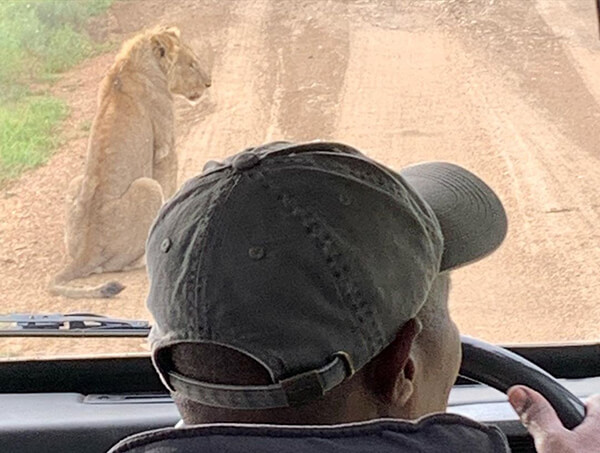
While on safari, our guide Kumbi made sure I nailed the timing element, bringing us out to view and photograph animals when the light was best (and constantly moving the Land Rover to ensure we had the best angle for getting a great shot).
If you shoot better without distractions, find a quiet place to take your custom marketing photos. If you aren’t comfortable taking pictures outside, find a great place indoors with natural light. If there is something within your control that you can do to give yourself an advantage while on a photoshoot, plan and make it happen.
5 ways to take better custom marketing photos
Get closer
Zoom can only do so much, and using this feature reduces the resolution of any image you capture, limiting your usage options.
When you can comfortably get up close to take a photo, you naturally increase the size of your subject (which helps draw viewers’ attention), reduce the field of view, and create a tight frame that reveals unexpected details.


“If your photos aren’t good enough, then you’re not close enough.”—Robert Capa, war photographer
Tell a story
Great custom marketing photos that tell a story essentially capture a moment filled with emotion. They make the viewer question what just happened or what will happen next. These images’ narrative qualities come from their energy.
So, you might be thinking, that’s all well and good, but … how do you actually take a photo that tells a story? Though no guaranteed formula exists, there are things you can do as a marketer to add storytelling oomph to an image.
Some popular techniques include:
- Adding a detailed and compelling caption
- Cropping for greater drama
- Adjusting color balance, saturation, vibrance, and other attributes
- Presenting in a group with additional images
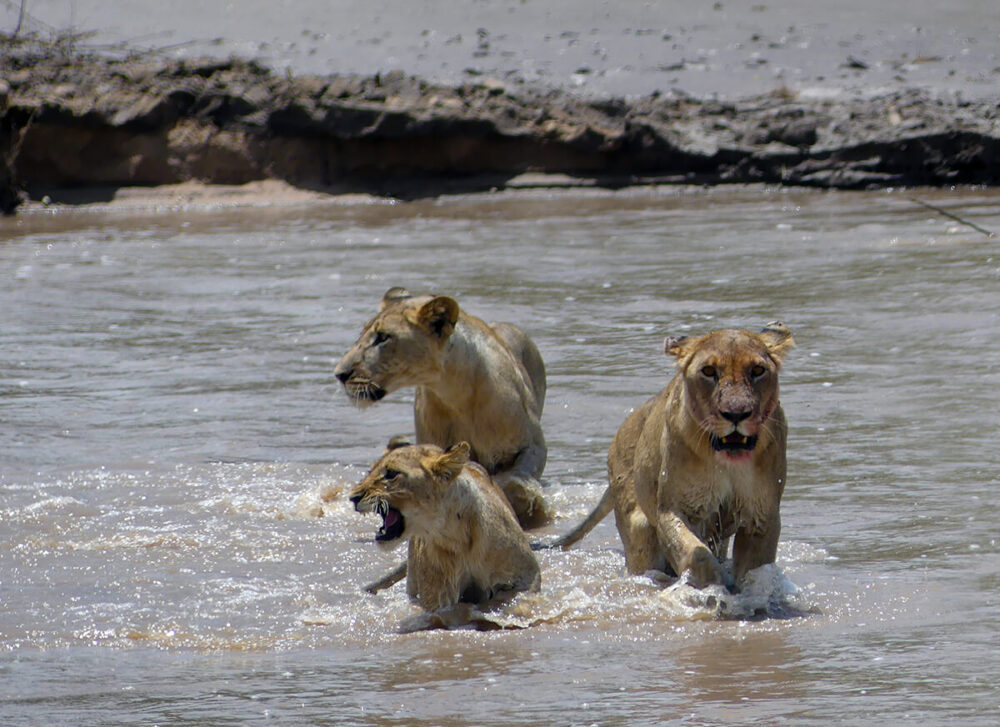

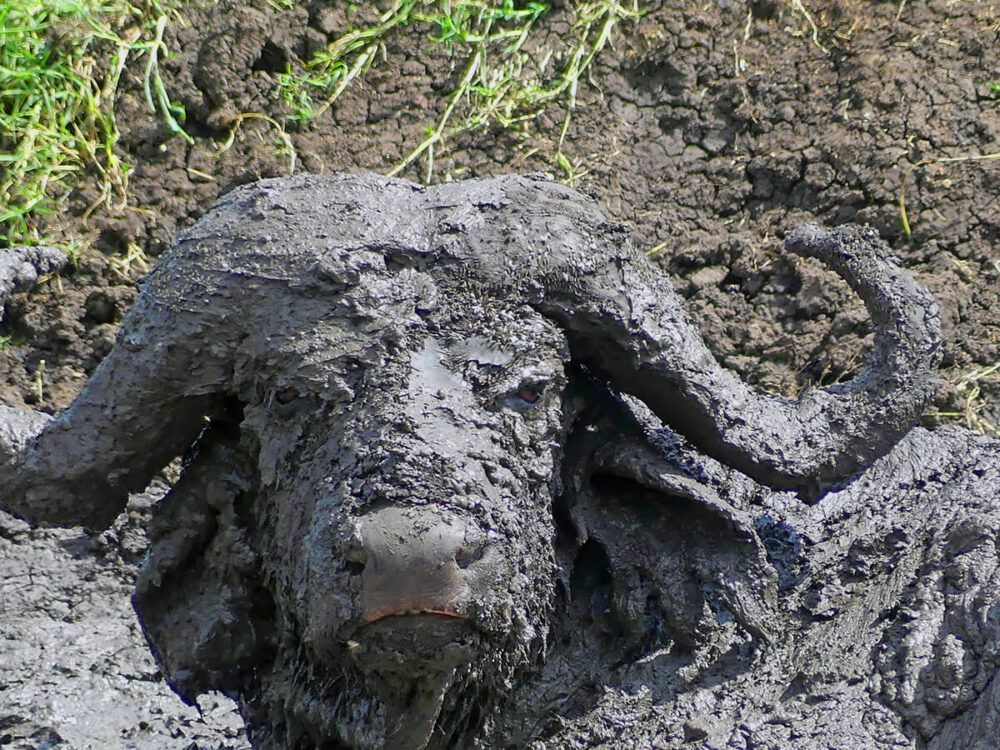
“The whole point of taking pictures is so that you don’t have to explain things with words.”—Elliott Erwitt, advertising and documentary photographer
Focus on quality
Curation is critical. Not every picture you take will be a winner. If your new branded stock includes an unflattering snapshot of your founder, archive it so it never accidentally gets used.
After some time, review your pics again. If you have had a lot of staff turnover or completely rebrand, update your library of branded photo assets to ensure that images you don’t want to see featured in future marketing campaigns aren’t used mistakenly.
Just because you can take a photo that doesn’t mean you should. The timing of our safari synced up with the Great Migration, which is when around two million wildebeest head north from south of the Serengeti. So we saw a lot of wildebeests, and my excitement at being so close got the best of me. I took many photos even when I knew the pictures would be no good (composition was off, the lighting was terrible, etc.). When I took the time to focus on the basics of good photography, my pictures reflected these extra considerations.
When you’re taking custom marketing photos, you’ll end up more satisfied with your shots if you make quality a priority and take the time to pull out your tripod if you have an unsteady hand, get the focus right, or move to a better angle, so the lighting is optimized.
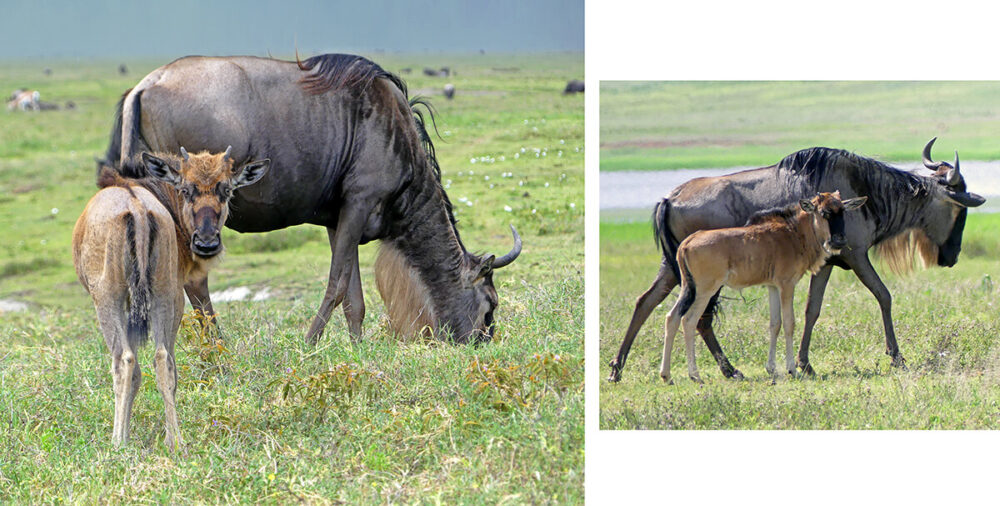
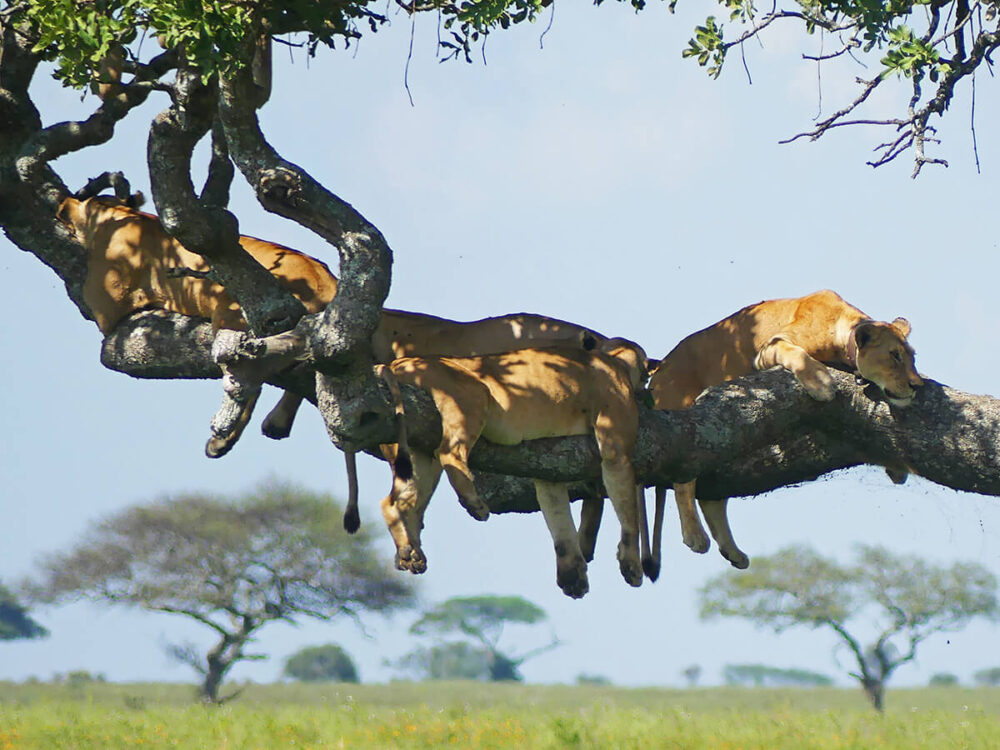
“The formula for doing a good job in photography is to think like a poet.”–Imogen Cunningham, portrait photographer
Be prepared
Always save the original copies of your custom marketing photos (and give them clear file names at your preferred cloud storage site). You never know when the CEO might see (and fall in love with) a cropped-and-edited picture that you took at a staff outing and shared on social media—and that he now wants to see added to the company website’s careers page as its new (huge) hero image.
While taking a continuing education class on podcasting, the instructor—who had been an award-winning producer at RadioLab—advised the class to never turn off our microphones until the person we were interviewing left because at the very end of a planned chat is sometimes when you get the best tape (recorded quotes) because often folks will have “I forgot to mention…” moments.
The same can be said for taking customer marketing photos—especially if the photoshoot involves people and not inanimate objects or landscapes. Keeping your camera ready means you’ll be prepared to go if a unique photography opportunity presents itself.


“The best camera is the one that’s with you.”—Chase Jarvis, @CreativeLive founder
FAQs about custom marketing photos
How do I get started taking custom marketing photos for my business?
Whether you use the camera built into your smartphone or borrow a Nikon from your cousin, all you need to start taking custom marketing photos for your business is a camera (and some idea of how to use it). If your device didn’t come with a manual, that’s okay. YouTube is an excellent resource for finding out how to take different types of photos in a myriad of locations with various lighting setups.

How can I make my marketing pictures better? How can I make my images look more professional?
Follow the five tips listed above. Plus, practice as much as possible, keep your lens clean, and always take more photos than you think you need. It’s much easier to delete pictures you don’t need than it is to try and recreate a moment after it’s over.
Where can I use custom photos in my marketing?
Here are just some of the places where graphic designers use custom marketing photography:
- Annual reports
- Banners, billboards, posters, and signage
- Brochures, flyers, rack cards, and handouts
- Email marketing
- Letterhead and business cards
- Newsletters and blog posts
- Packaging
- Presentations and reports
- Press releases and media kits
- Paid ads
- Social media
- Videos
- Websites and landing pages

How do you take a professional marketing picture of yourself?
In an ideal situation, you’ll have a professional photographer—or at least a trusted friend or coworker—help you take a portrait for use in marketing materials, but sometimes that isn’t possible.
If you are on your own, you can do a few things to make sure the image you capture (using just your smartphone!) looks as good as possible.
- Practice your smile in a mirror (no fake smiles, please)
- Choose a spot with a simple background
- Schedule your shoot for when natural lighting is best (avoid harsh shadows by ditching your flash)
- Spend time getting ready, so you look “picture perfect”
- Position your camera at a flattering angle
- Do something to help yourself loosen up and get more comfortable
- Use your camera app’s timer, anti-shake, and burst features
- Take a ton of photos so that you have plenty of options
- Use Photoshop to crop and touch up the best portraits
Bonus advice? Though it might feel intimidating, don’t be afraid to look directly into the camera lens when taking your professional self-portrait.
When the subject of a photo makes eye contact with viewers, it can signal confidence. In some cases, portraits, where the subject is looking away, can communicate suggestive disinterest or low self-esteem to a viewer.

What is brand imagery, and how do you make your marketing photos match your visual identity?
Brand imagery includes photos, illustrations, and other visuals that communicate “feelings” about your brand to customers and others in your target audience.
The marketers at Nike consistently use inspiring photos to show off their athletic gear. The team at Apple focuses on capturing uncluttered, dramatic images of their innovative products. The folks at National Geographic share dramatic, raw, and colorful pictures of Earth’s most stunning people, places, animals, etc.
Companies and organizations with really great brand imagery do such a good job with their pictures they can make you buy things you don’t need or send another check after you’ve already made a donation. Simply put: brand imagery, done well, is powerful.
Help! I don’t know what to take photos of. Where can I get good ideas for custom marketing photos?
Sometimes, you will have a clear creative brief to follow (e.g., “Take a temporary photo of our new VP to use on the website because our photographer isn’t available until next month”). In other cases, your needs might be open-ended, requiring you to get creative (e.g., “We need more original pictures to share on our social media channels.”)
Anything that takes a significant amount of your time—like a request to capture custom marketing photos for social media on an ongoing basis—should be planned with goals in mind. Consider how the new images you have to create will be used, who the audience is, what you want them to do, etc. Answering basic questions like these will help you create a strategy and, likely, help you generate ideas, too.
Other common ways to brainstorm for inspiration include checking out your competition’s social media accounts to see which of their images resonate the most with customers (and drives engagement).
Traditional print advertising in magazines and newspapers, websites listing competition winners, and even Pinterest are also great sources of inspiration when you plan photoshoots for personalized marketing stock.
What are the different types of images used for marketing?
Some of the most popular kinds of photography used in marketing campaigns include:
- Abstract pictures
- Action or sports shots
- Advertising images
- Aerial photography
- Architectural photos
- Beauty snaps
- “Before-and-after” or “past-and-present” pictures
- Black and white photography
- Branded stock photography
- Candid photos
- Conceptual photography
- Digital presentation imagery
- Editorial pictures
- Event images
- Facility shots
- Fashion and modeling photography
- Forced perspective photos
- Golden hour shots
- “Grip and grin” or “check passing” pictures
- Group photos
- HDR images
- High-speed shots
- Infrared snaps
- Landscape and nature photography
- Large-scale photographs
- Lifestyle shots
- Location and room set images
- Long exposure shots
- Macro and micro photos
- Night photography
- Product shoots (consider different angles based on usage needs)
- Packaging photography
- Panoramic photos
- Portraits and headshots
- PR images
- Product shots
- Real estate shots
- Recipe and food photography
- Satellite and drone pictures
- Still life images
- Social media snaps (with different crops based on the channel)
- Street or urban photography
- Sunrise and sunset photos
- Tilt-shift pictures
- Time-lapse photography
- Travel shots
- TV commercial stills
- Underwater pictures
- Vehicle images
- Weather photos
- Wildlife photography
Why you should invest in shooting custom marketing photos
If a picture is worth a 1,000 words, make sure the words your images are “saying” support your brand messaging.
With so many companies settling for generic (and often less than stellar) stock photography snaps for their marketing materials, using memorable custom marketing photos is an effective way to:
- build credibility (authentically set yourself apart from the competition)
- get attention and keep it (make sure you are noticed by even the busiest leads)
- demonstrate value (visually communicate your professionalism with bespoke imagery)
- boost brand recognition (connect with your target audience)
- improve your website user experience (convey the right message to users)
Suppose you aren’t sure how to start building a library of branded images. In that case, TBH Creative can help—whether that means creating a complete plan or just giving you a hand creating photography shot lists, creating new templates to ensure you get the most out of your pics, or something else! This is something we do, and we do it well.
Let’s talk about how you can maximize the ROI on your custom marketing photos.
